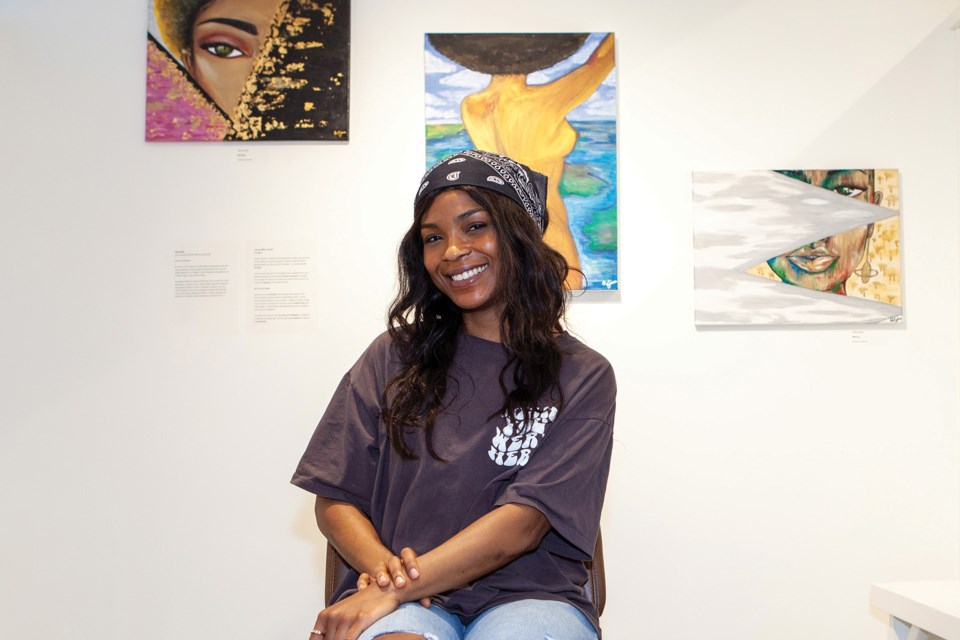A conversational salon featuring Nigeria-born painter Teri Ejere has confirmed a pattern of artful collaboration between the Gibsons Public Art Gallery and the Sunshine Coast’s Black History Month Collective.
Ejere’s appearance at the gallery on March 4 was the coda to a month-long exhibition of her works. It was also the second time the gallery has collaborated with the collective to highlight artists of colour during February’s annual commemoration of Black history.
According to gallery president Leslie Thomson, the relationship is now firmly entrenched. “It’s not always you get the support of everybody,” he said, “so this is a good opportunity to feel that presence [of support]. And the Gibsons gallery is a team effort.”
The gallery’s Black History Month tradition was inaugurated in 2021 by watercolourist Denise Brown. Her paintings of traditional quilt blocks underscored the coded messages contained in their designs for fugitive slaves. There was no exhibition last year, owing to COVID-related constraints.
Brown, who was present for last Saturday’s salon, is a member of the Black History Month Collective that identified and invited Ejere to exhibit this year. Ejere now resides in Surrey. It was the first time the self-taught artist has shown her work on the Sunshine Coast.
Ejere’s series of acrylics explore the subjective experience of perceiving beauty and identity.
“I would usually paint what I see,” she said, “and other times I would paint just because it was pretty. Over time, when I started to learn more about my art, I realized that I really wasn’t just painting what I saw. I was painting what I thought they felt like and what I thought they looked like. This came about by taking the lens and pointing it back at myself.”
Revelation and emergence are recurring themes in Ejere’s depictions of the female form. In Epiphany, an expectant face appears in profile behind a veil covered in geometric symbology. Obstructions between the viewer and the subject reoccur in Mistress, in which a seductress peers through blade-like protrusions. The nude figure in Oya (Goddess of Rebirth) is seen from behind, the serpentine cleft of her spine echoing the watery scene she exalts with an upheld arm.
“I want people to look within,” said Ejere. “Sometimes we get angry at things that we shouldn’t get angry at because we don’t understand the perception of the other person. At the same time, sometimes we don’t get angry at things we should get angry at because we’re so used to them.”
Recognition and respect are the first steps to realizing social justice, Ejere emphasized. She strives to paint women whose skin colour will make other Black women feel represented, while incorporating the chromatic diversity of so-called black skin. The three panes of Shades depict women with different pigmentation adorned with electric blue, pink and green lipstick.
Ejere, who is also a dance artist and poet, equates the quest for racial harmony with the enthusiastic embrace of inherited culture. “When a cat lives with dogs, sometimes it starts to look like a dog, and it might even want to bark a little,” she said. “But we’re not the same. And our culture makes certain things better for us, just as yours makes other things better for you.”
A selection of paintings from Ejere’s Gibsons exhibition can be viewed at her website: https://teriejere.wixsite.com/oe-art.



